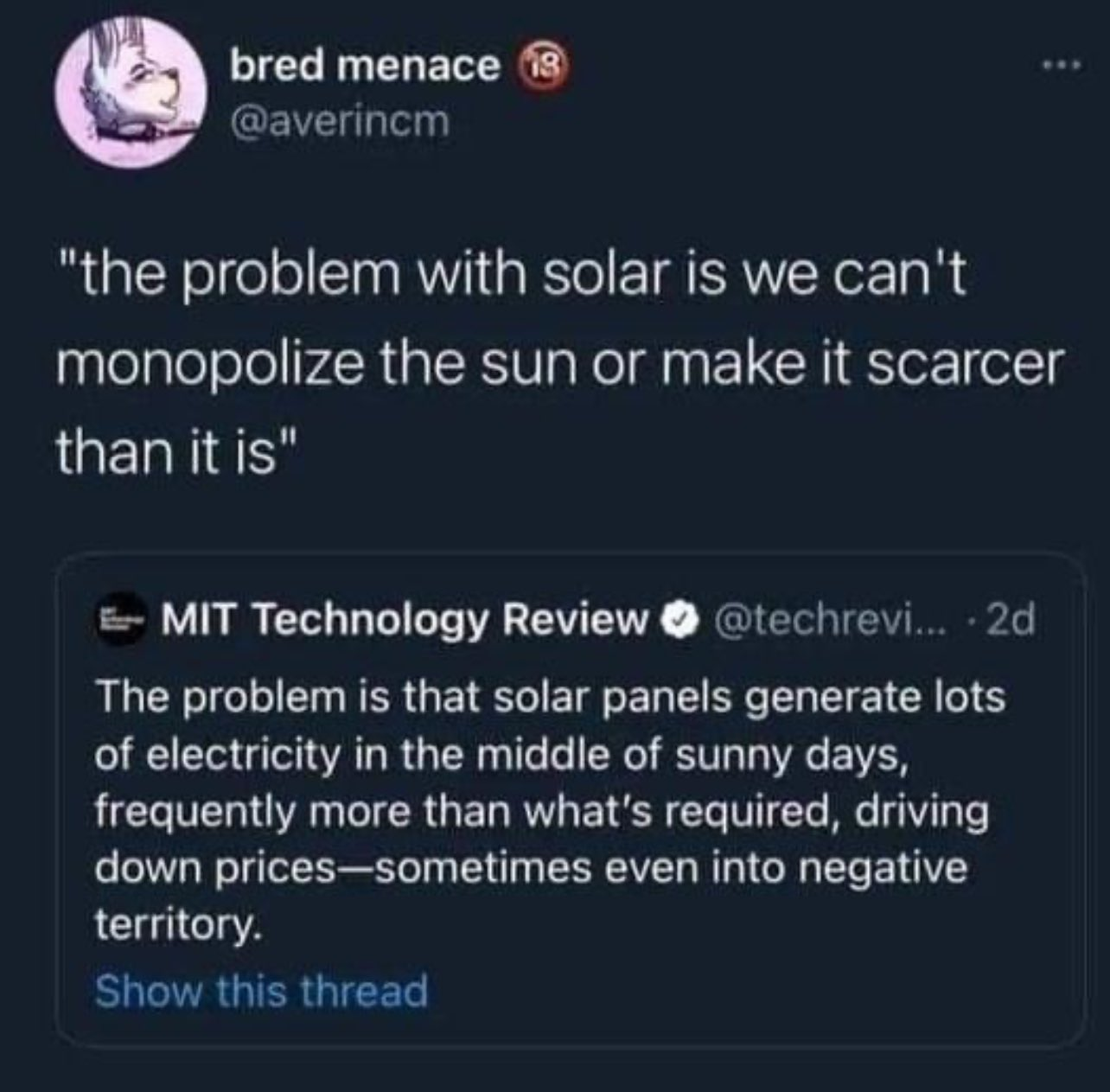this post was submitted on 02 Oct 2024
1697 points (95.6% liked)
Microblog Memes
8919 readers
1402 users here now
A place to share screenshots of Microblog posts, whether from Mastodon, tumblr, ~~Twitter~~ X, KBin, Threads or elsewhere.
Created as an evolution of White People Twitter and other tweet-capture subreddits.
Rules:
- Please put at least one word relevant to the post in the post title.
- Be nice.
- No advertising, brand promotion or guerilla marketing.
- Posters are encouraged to link to the toot or tweet etc in the description of posts.
Related communities:
founded 2 years ago
MODERATORS
you are viewing a single comment's thread
view the rest of the comments
view the rest of the comments

From a grid stability point, you can't produce more than is used, else you get higher frequencies and/or voltages until the automatics shut down. It's already a somewhat frequent occurence in germany for the grid operator to shut down big solar plants during peak hours because they produce way more power than they can dump (because of low demand or the infrastructure limiting transfer to somewhere else)
Negative prices are the grid operator encouraging more demand so it can balance out the increased production.
But the thing is, you CAN simply turn them off at the press of a button (or an automated script) so its really a complete non issue. As long as big solar installations control systems are accessible by the grid operators, it should be fine.
If you’re spending billions to build a solar plant that has to turn off all the time during peak hours then you’re wasting your money. That seems like a fundamental issue to me, not a non-issue.
Are there any solar plants that cost a billion dollars each?
Secondly, you want to over build solar, so that you have enough capacity during off peak hours. Grid storage is obviously the better solution, but seems not widely available enough yet.
It doesn’t matter how much solar you build; without storage you’ve got zero power available at night.
The issue with overbuilding solar is that you drive daytime electricity prices to zero so that everyone is losing money on all these solar plants. Furthermore, base load plants such as nuclear plants also start losing money and they have no ability to shut down during peak hours. So you end up driving the base load plants out of business and they shut down permanently. Now you have even less capacity available at night! This causes nighttime power to become extremely unreliable, potentially leading to rolling blackouts and skyrocketing nighttime energy prices.
Another issue that people rarely discuss is the quality of power on the grid. All the grids in the world operate on 50/60 Hz AC which must be carefully maintained at an accurate frequency and synchronized with the grid. The main base load turbines are the source of this waveform which is carefully monitored and adjusted to remain stable.
Solar panels produce DC power which needs to be converted into AC with an inverter and synchronized with the grid. The problem is that if all the base load turbines are taken off the grid then there is nothing for the solar inverters to synchronize with! Turbines are nice and stable because they’re literally an enormous, massive spinning flywheel. Without them you’ll have an extremely unstable system where all of the solar plants are trying to adjust their frequencies and phases to match each other and the whole thing wanders all over the place.